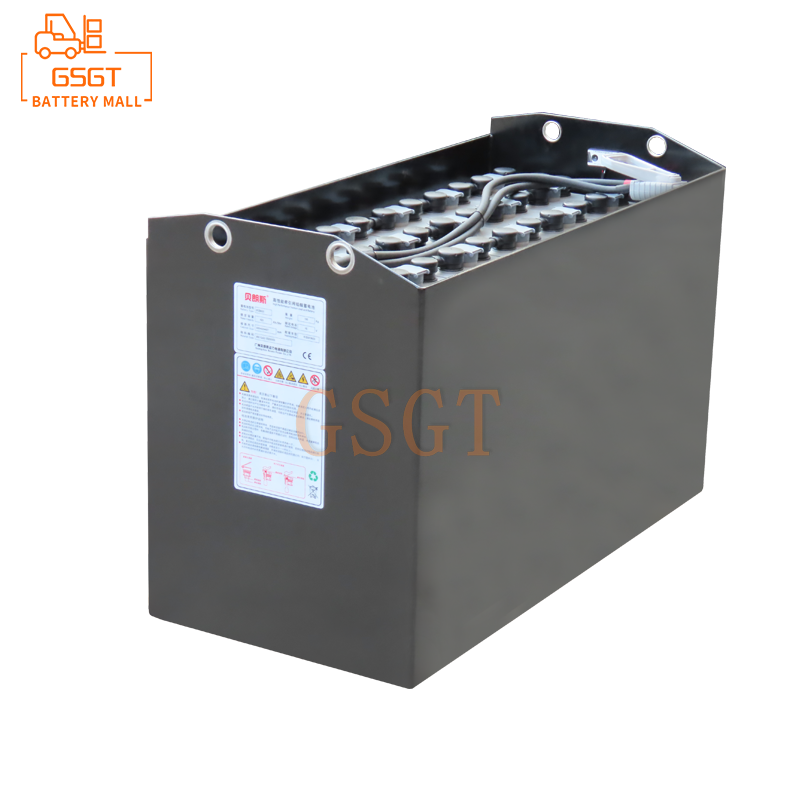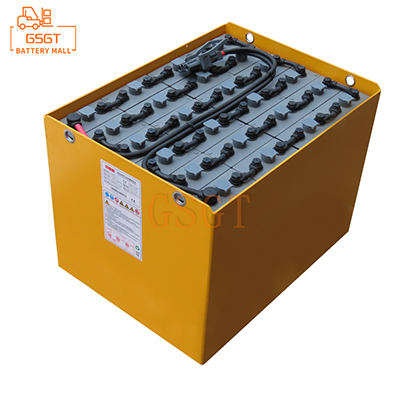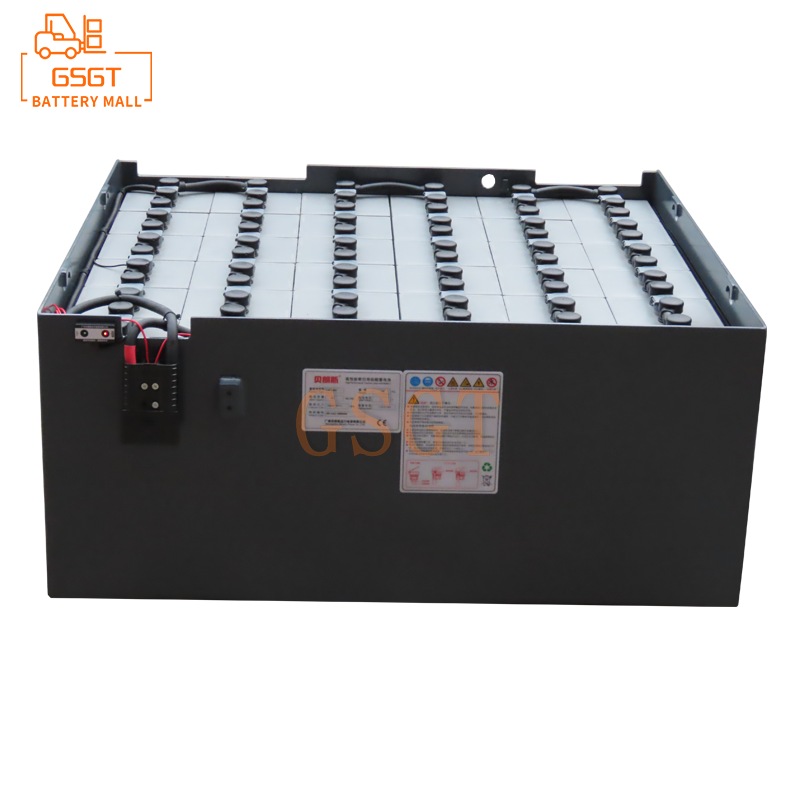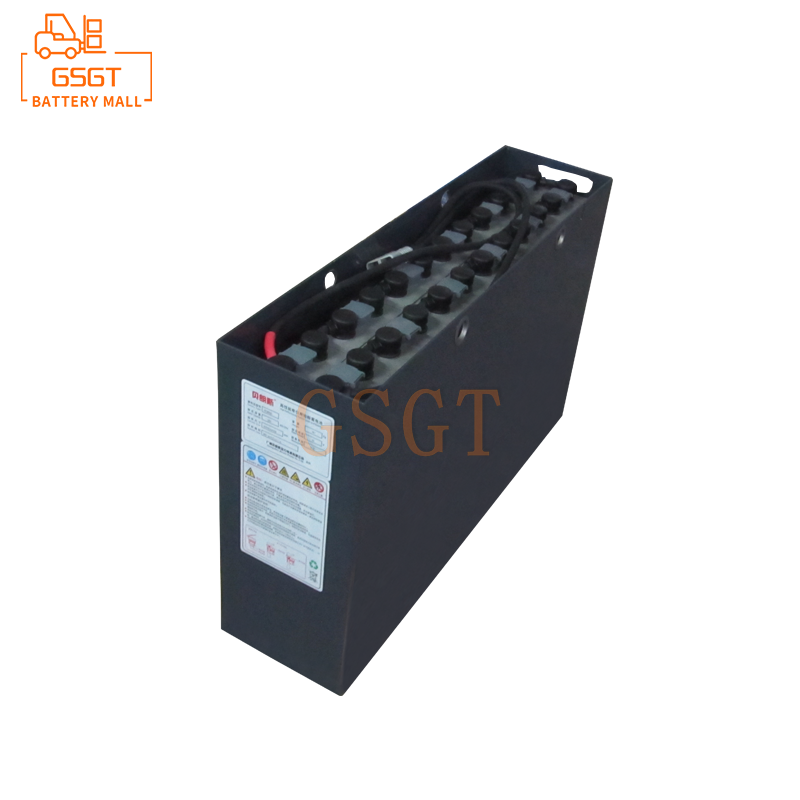Time:2025-05-10 09:47:17
Browse:664
In the fields of logistics and industrial handling, forklifts, as key equipment, the performance of their power sources directly affects operational efficiency and operating costs. Lead-acid batteries have long dominated the power systems of forklifts due to their low cost, mature technology and relatively high safety. However, in the face of the current development demands for high efficiency and environmental protection in the logistics industry, the limitations of traditional forklift lead-acid batteries in terms of energy density, charging time, service life and environmental protection have become increasingly prominent. Therefore, exploring practical performance upgrade plans has become the key to promoting the sustainable development of the forklift industry.
Analysis of Existing Problems of Lead-Acid Batteries in ForkLifts
Energy density restricts the performance of battery life
The energy density of lead-acid batteries is relatively low, which leads to a short driving range of forklifts after a single charge. Take the common electric forklift as an example. When the lead-acid battery it is equipped with is fully charged, if the forklift is in a high-intensity operation mode, such as frequently loading and unloading heavy objects or transporting goods over long distances, it often cannot support the operation requirements of a complete working day. It needs to be charged multiple times in the middle, which greatly reduces the operation efficiency and limits the application of the forklift in some scenarios with high requirements for endurance.
The time-consuming charging affects the continuity of the work
The charging time of traditional lead-acid batteries is long, usually taking 8 to 10 hours to complete a full charge. This means that the forklift cannot operate during the charging period, resulting in a long period of downtime and waiting, which seriously affects the continuity and efficiency of logistics operations. In the fast-paced modern logistics warehouse, forklifts frequently stop for long periods due to charging, which will lead to the obstruction of the goods handling process, an increased risk of goods overstocking, and a rise in operating costs.
Limited lifespan increases the cost of use
The cycle life of lead-acid batteries is relatively short. Usually, after 300 to 500 charge and discharge cycles, the battery capacity will show a significant decline, making it difficult to meet the continuous and stable power supply requirements of forklifts and requiring replacement. Frequent battery replacement not only increases the equipment procurement cost, but also involves a series of cumbersome tasks such as battery disassembly, installation and disposal of old batteries, further raising the operating cost and management difficulty.
The pressure of environmental protection urgently needs to be solved
On the one hand, the production process of lead-acid batteries involves the use of harmful substances such as lead and sulfuric acid. If environmental protection control in the production process is not in place, it is easy to cause environmental pollution. On the other hand, if used lead-acid batteries are not properly recycled and processed, the leakage of lead, sulfuric acid and other substances within them will cause serious pollution to the ecological environment such as soil and water bodies, and lead pollution is extremely harmful to human health.
Performance upgrade Strategy for Forklift Lead-acid batteries
Material innovation optimizes performance
Innovation in plate materials: Develop new lead alloy materials for plates, such as adding specific proportions of calcium, tin and other elements to traditional lead-antimony alloys to form multi-component alloys. This type of alloy can effectively reduce the corrosion rate of the plates, enhance their mechanical strength, and decrease the shedding of active substances, thereby extending the battery's service life. Meanwhile, the manufacturing process of the plates is optimized, and a more refined pasting process is adopted to make the active substances bond more closely with the substrate of the plates, enhance the utilization rate of the active substances, and improve the charging and discharging performance of the battery.
Electrolyte improvement: Explore new electrolyte additives, such as certain organic compounds or nanomaterials. These additives can create a special chemical environment in the electrolyte, inhibit the side reactions of the battery during charging and discharging, reduce the formation of lead sulfate crystals, lower the internal resistance of the battery, and improve the low-temperature performance and high-current discharge capacity of the battery. In addition, the electrolyte formula was optimized, and the concentration and specific gravity of sulfuric acid were adjusted to better match the new plate materials, further enhancing the comprehensive performance of the battery.
Upgrade of partition material: Select high-performance partition materials, such as composite fiber partitions with high porosity, low electrical resistance and strong chemical stability. This separator can effectively prevent short circuits between the positive and negative plates, while ensuring the rapid transmission of ions in the electrolyte, enhancing the ion conduction efficiency inside the battery, and thereby improving the charging and discharging efficiency as well as the cycle life of the battery.
Manufacturing processes enhance quality
The manufacturing process of the plates is refined: In the plate paste application stage, high-precision automated paste application equipment is introduced to precisely control the thickness and uniformity of the paste application, ensuring that the load of active substances on each plate is consistent. Meanwhile, optimize the curing and formation process parameters. By precisely controlling conditions such as temperature, humidity and time, the active substances on the plates can be fully transformed to form a stable and efficient electrochemical reaction structure, thereby enhancing the consistency and stability of the plate performance.
Battery assembly process optimization: Advanced automated assembly technology is adopted to ensure the precise and error-free installation of each component inside the battery. During the assembly process of the electrode group, high-precision welding techniques such as laser welding are applied to replace traditional manual welding, reducing problems like false welding and false welding, enhancing the reliability and conductivity of the electrode group connection, lowering the internal resistance of the battery, and improving the overall performance and reliability of the battery.
A complete quality inspection system: A comprehensive and multi-level battery quality inspection system has been established. Strict inspection procedures are set up in every link of battery production, including raw material procurement, component manufacturing, assembly and finished product delivery. By using high-precision detection equipment such as battery internal resistance testers, capacity testers, and charge and discharge cycle life testing systems, real-time monitoring and data analysis of various performance indicators of batteries are carried out. Quality problems in the production process are promptly identified and resolved to ensure the stable and reliable quality of batteries leaving the factory.
Fast charging technology shortens the duration
Research and development of high-power charging equipment: Develop high-power fast charging equipment suitable for forklift lead-acid batteries to enhance charging power. By optimizing the circuit topology structure and power device selection of the charging equipment, it can significantly increase the charging current and voltage while ensuring charging safety, and shorten the battery charging time. For instance, by adopting the new high-frequency switching power supply technology, the conversion efficiency of charging equipment can be enhanced and energy loss during the charging process can be reduced.
Charging algorithm optimization: Design advanced charging algorithms, such as pulse charging algorithm, constant current - constant voltage segmented charging algorithm, etc. These algorithms can dynamically adjust the charging parameters according to the real-time status of the battery during the charging process, avoid overcharging and overheating of the battery, and improve the charging efficiency and battery life. Meanwhile, by precisely controlling the charging curve, the polarization phenomenon inside the battery during the charging process is reduced, and the battery's ability to accept charging is enhanced.
Construction of charging infrastructure: In forklift centralized operation sites such as logistics warehouses and factories, plan and build fast charging infrastructure reasonably. Equip with a sufficient number of fast charging piles and ensure that the layout of the charging piles is reasonable to facilitate the quick access and charging of forklifts. At the same time, a charging pile management system should be established to achieve remote monitoring, fault diagnosis and operation and maintenance of charging piles, and improve the utilization efficiency and reliability of charging facilities.
The recycling and utilization of used batteries promote environmental protection
Recycling system construction: Establish and improve the recycling network for used forklift lead-acid batteries, with the participation of multiple parties such as battery manufacturers, distributors, and professional recycling enterprises, to form a wide coverage, efficient and convenient recycling system. Set up used battery recycling points in logistics warehouses, forklift sales points, maintenance stations, etc., to facilitate users in returning used batteries. Meanwhile, through economic incentive measures, such as providing users with certain recycling subsidies, the enthusiasm of users to participate in the recycling of used batteries can be enhanced.
Innovation in recycling technology: Develop advanced recycling technologies for used lead-acid batteries to enhance the recovery rate and purity of valuable substances such as lead and sulfuric acid. For instance, hydrometallurgical technology is adopted, and through processes such as chemical leaching, separation and purification, metals like lead and antimony are efficiently recovered from used batteries. By using bioremediation technology and leveraging the action of microorganisms, the recovery and reuse of sulfuric acid from used batteries can be achieved. These technologies can not only reduce resource waste, but also minimize environmental pollution during the disposal of used batteries.
A complete circular utilization industrial chain: With the recycling enterprises of used lead-acid batteries as the core, a complete circular utilization industrial chain from the recycling, disassembly, regeneration and utilization of used batteries to the manufacturing of new products is constructed. Reusing recycled raw materials such as lead and sulfuric acid into the battery production process can achieve the recycling of resources, reduce the production cost of batteries, and at the same time decrease the reliance on primary mineral resources, promoting the sustainable development of the battery industry.
Conclusion
The performance upgrade of forklift lead-acid batteries is a complex and systematic project, involving multiple aspects such as material innovation, manufacturing process improvement, application of intelligent management systems, research and development of fast charging technology, and recycling and utilization of used batteries. By implementing the above-mentioned performance upgrade strategies, the energy density of forklift lead-acid batteries can be effectively enhanced, the charging time can be shortened, the service life can be prolonged, and environmental pollution can be reduced, meeting the urgent demands of the logistics and industrial handling fields for efficient, environmentally friendly and low-cost operation of forklifts. In the future, with the continuous advancement and innovation of technology, the performance of lead-acid batteries for forklifts is expected to achieve greater breakthroughs, injecting new vitality and impetus into the sustainable development of the forklift industry. Meanwhile, relevant enterprises and research institutions should enhance cooperation, increase investment in research and development, promote the industrial application and popularization of performance upgrade technology for forklift lead-acid batteries, and jointly facilitate the green, intelligent and efficient development of the forklift industry.

$2450

$3405

$4045

$1060

MESSAGE
Professional And Efficient
Security
Affordable Price
Professional Services